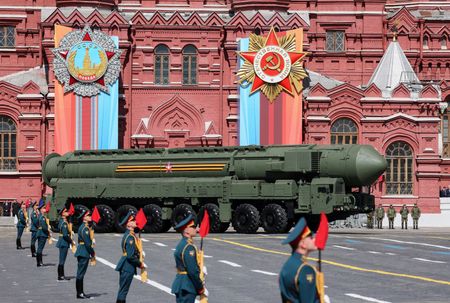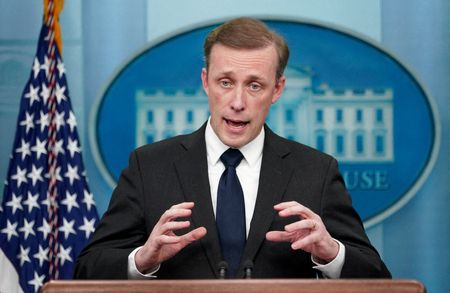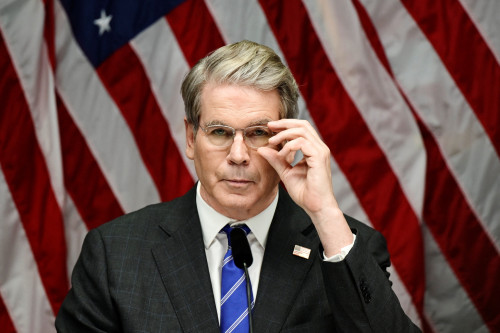By Jonathan Landay and Arshad Mohammed
WASHINGTON (Reuters) – The United States does not need more nuclear weapons to deter the combined forces of Russia and China because of its advanced military capabilities, U.S. national security adviser Jake Sullivan said on Friday.
Sullivan also said Washington will abide by the limits on strategic nuclear weapons set in the 2010 New START treaty until the pact’s 2026 expiration as long as Russia does the same, and it is eager for arms control talks with both Moscow and Beijing.
His speech to the Arms Control Association advocacy group represented the latest U.S. overture to its main geopolitical rivals to help repair what he called “major cracks” in the decades-old global system designed to avert nuclear war.
Moscow and Beijing have so far spurned those overtures.
China, in a tense standoff with the United States over Taiwan as it expands its nuclear arsenal, has declined to engage in a conflict risk reduction dialogue with Washington and this week refused talks between their defense ministers.
The Pentagon says China is likely to more than triple its nuclear arsenal to 1,500 warheads by 2035.
Russia, which has threatened to use nuclear weapons in its war against Ukraine, in February said that it was suspending participation in New START, a move denounced by Washington as “irresponsible and unlawful.”
On Thursday, the United States ended notifications required by the pact halted by Russia earlier this year.
The last U.S.-Russia strategic arms control accord, New START capped the number of strategic nuclear warheads the sides can deploy at 1,550. It also limits the number of land- and submarine-based missiles and bombers to deliver them at 700.
Sullivan noted that for years, rival nations would hive off from other contentious issues “strategic stability” talks to reduce the risks of nuclear confrontation.
The United States is pursuing “new strategies” to deal with the new era, he said, including modernizing its nuclear forces and developing cutting-edge conventional weapons like hypersonic missiles “that will sustain our military for decades.”
With China’s expanding nuclear arsenal, the United States for the first time may confront two major nuclear-armed rivals where it had faced only Russia.
But he said advanced U.S. military capabilities and strengthened alliances could deter conflict with both.
“The United States does not need to increase our nuclear forces to outnumber the combined total of our competitors in order to successfully deter them,” Sullivan said.
“Nor does the United States need to deploy ever more dangerous nuclear weapons to maintain deterrence,” he continued. “Rather, deterrence means we have a ‘better’ approach, not a ‘more’ approach.”
The United States is eager to begin without preconditions conflict risk reduction talks with China and discussions with Russia on a strategic arms limitation pact to replace New START when it expires in February 2026, he said.
“While claiming to suspend New START, Russia has also publicly committed to adhere to the treaty’s central limits, indicating a potential willingness to continue limiting strategic nuclear forces through 2026. We agree,” Sullivan said.
Saying “an open-ended competition” in nuclear arms is in neither’s interests, he said Washington is “prepared to stick to (New START’s) central limits as long as Russia does.”
“Rather than waiting to resolve all of our bilateral differences, the United States is ready to engage Russia now to manage nuclear risks and develop a post-2026 arms control framework,” Sullivan continued.
That pact, however, would have to take account of China’s growing nuclear arsenal, he said.
“The type of limits the United States can agree to after the treaty expires will, of course, be impacted by the size and scale of China’s buildup,” he said. “That’s why we’re also ready to engage China without preconditions.”
(Reporting by Jonathan Landay and Arshad Mohammed; Editing by Christian Schmollinger and Nick Macfie)






